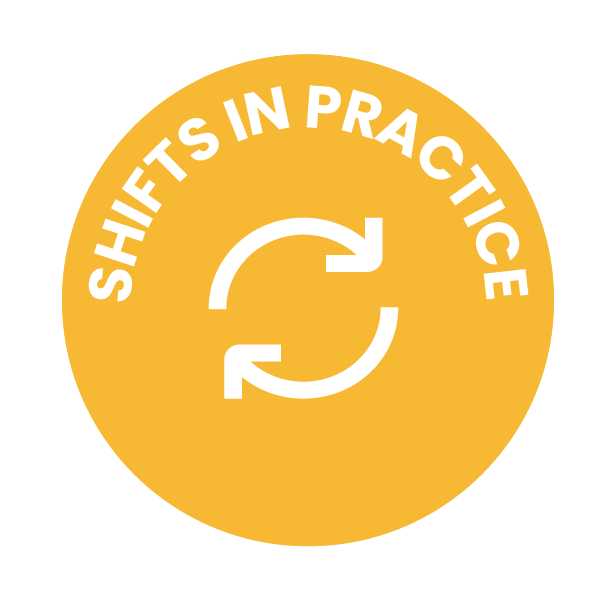Leveraging AI's Potential in Competency-Based Learning
Agency, equity and transfer are the centerpieces of our approach. In 2015, we began our transition to a CBL approach, which provided language and a framework for implementation. Nine years later, as we refine our approach to CBL, we are thinking more and more about how that very framework has put us in an enviable position to reimagine learning using AI.
Any school who, like GOA, has created a portrait of a graduate or educator competencies, or has moved toward proficiency-based or standards-based approaches, has (quite by accident) created a wonderfully fertile environment in which to reimagine learning using burgeoning AI technologies. Below are five particular ways we are thinking about using AI and our competency-based system to reimagine learning.

AI as a Feedback Multiplier
One of the fundamental elements of effective learning is the quality, timeliness, and consistency of feedback. As Grant Wiggins’ seminal essay on quality feedback denotes, quality feedback must be goal-referenced, tangible and transparent, actionable, user-friendly, timely, consistent and ongoing. However, the capacity of educators to provide personalized feedback is limited by time and resources. This is a moment where AI tools can multiply and systematize a teacher’s talent and energies for giving students’ feedback that drives learning. By training AI systems on established learning outcomes and the feedback styles of educators, students can receive preliminary feedback on their work. Imagine beginning a course and creating 20 copies of a GPT trained on the feedback you have given students in recent years and the particular durable skills you are hoping to help students build. Each GPT is shared with an individual student, and its knowledge base is updated by the student and the teacher periodically based on individual needs and goals. All of sudden, students can get feedback from a bot who sounds a lot like their teacher prior to submitting a final piece of summative work. Nobody is being replaced, and nobody is pretending or cheating in any way, but a student is getting more goal-oriented, timely feedback than the teacher would have otherwise been able to provide. Before, the teacher couldn’t possibly have offered instantaneous feedback on three drafts for every student in class, now just maybe they can.
AI as a Transfer Coach
One of the ultimate goals of education is to equip students with skills and understandings that can be applied in increasingly complex novel contexts, including future academic endeavors and thriving in a globally networked society. Connecting learnings from one context to another, however, requires a heavy cognitive lift. An example: It can be hard to remember what my teacher told me about my approach to problem solving in Unit 4 as I undertake a similar challenge in Unit 7. And it’s certainly challenging to apply feedback my 7th-grade English teacher gave me about my approach to collaboration as I begin a project in my 9th-grade Biology class. As proficiency-based schools grow into AI systems, that may not be so difficult after all. I’m imagining a friendly bot that reaches out to students: “Hey, I see that you’re starting a project related to collaborating with classmates who don’t share your location. Here is a synthesis of feedback your teachers have given you on this over the last three semesters as well as what you yourself have said in your own reflections. Remember that one of your goals is to more effectively communicate with partners in other time zones. Be mindful of the following three things…” In short, remembering and synthesizing feedback collected over a long period of time and across multiple classes is nearly impossible for us time-starved mortals, but this is the sort of thing computers are really, really good at.
AI as a Super Connector
We know from many years of student surveys at GOA that connections between teachers and students and between and among students is a significant part of what makes for successful learning experiences. GOA teachers often find themselves operating as a connector among their students. GOA Orientation has always included an activity called “Connections” where students post videos about their personal interests and then reply to their new classmates highlighting a shared interest or connection. In a school-wide, competency-based system we could use emerging AI technologies to connect students based on common interests, skills or gaps emerging in real time. In particular, in competency-based or personalized learning environments, there can be a tension between community and increased student agency as students pursue passion projects (rather than consuming 1-size-fits-all curriculum). Emerging AI tools may provide opportunities for transcending this tension. Are there twenty students in grades 10-12 working on papers or projects related to climate change? Do their teachers know this? Do they know one another and are they connected to the teacher running the Environmental Club? And are there parents or alums in our network working in Climate Science? These are connections that we are occasionally able to make for our students out of sheer luck…we overhear a conversation and we’ve had just enough coffee to remember a second conversation and make a connection. I would suggest that we can begin doing this systematically using AI tools and subsequently deepen students’ learning experiences by connecting them to more humans in our communities with shared passions. In the case of GOA, we anticipate supercharging our approach to connecting students with common interests to global classmates and mentors across continents and cultures.
AI as a Coach for Educators
AI can also serve as a valuable resource for educators, providing real-time coaching and feedback on teaching strategies. I remember reading Doug Lemov’s book, Teach Like a Champion back in 2010. Scholars analyzed many hundreds of hours of recorded classes in order to identify 49 teaching moves that really drive learning results. By analyzing data on learning outcomes and feedback that teachers have given (and sure, videos of classes etc.), every school could be doing just that for their particular community. AI can suggest effective teaching approaches and interventions, helping educators to refine their methods and better support student learning. Are there particular facilitation moves going on in your learning spaces that are improving particular learning outcomes? To be sure, we should always gather with colleagues and share best practices with one another, but it isn’t outside the realm of possibility for AI tools operating in the Learning Management System to notice certain trends that are correlated to improved student learning outcomes. For example, teacher A posts publicly in student discussion spaces 80% of the time, whereas teacher B posts their comments privately for students 80% of the time. How do those seemingly small decisions affect subsequent student engagement in asynchronous discussions? And do teachers who often post their comments publicly see growth in students on this learning outcome: “Interaction: You actively listen to group members, ask questions in response to their ideas, and respond respectfully”? The data is there, and it tells the story. AI can help us read and understand it. Schools who are using their LMS in a robust way, and for whom teaching and learning is organized around a defined set of learning outcomes, are well positioned to use AI to identify best practices, share them across the faculty, and provide just-in-time suggestions for effective teacher moves.
Proactive Student Support through AI
Finally, the competency-based approach, with its clear data structure, offers unique opportunities for proactive student support. AI can identify patterns in student engagement and performance, enabling educators to intervene before difficulties snowball. This proactive approach can significantly enhance student confidence, success and well-being. Which students are struggling with which competencies, and what kinds of nudges have been most effective helping students to grow in those areas in the past? Again, the data in your LMS gradebook and on your proficiency-based rubrics have a lot of the answers. It’s just a question of enlisting the necessary computing power to identify these patterns and suggest just-in-time interventions. What data patterns in the LMS or elsewhere are most suggestive of a student who may be starting to struggle, and how might we leverage AI to intervene before things go sideways. AI can help us identify the earliest signs of struggling or disengaged students and suggest ways that educators can best support them.
Navigating the Future with AI
These days schools are having a lot of important conversations about AI, in particular as it relates to safety, privacy and academic integrity. We’re having these same conversations at GOA. At the same time we are thinking and talking about the promise of AI. At the most basic level, these large language models are making predictions based on patterns. Schools operating in a competency-based environment have clarity around what their goals for students are, which is to say that they’ve laid the tracks on which AI can run its trains. If they’ve been thoughtful in the design of their systems for collecting information about the learning (discipline agnostic learning outcomes, LMS gradebooks, program-wide rubrics, competency-based reporting mechanisms, etc.) they have the data at their fingertips to begin thoughtfully and wisely experimenting with the ways that data can be used alongside AI tools to reimagine learning in truly exciting ways.
For more, see:
- Iterating With AI: What To Do When You Are Stuck
- AI Essentials for Educators: Where to Begin
- 14 Ways Technology Supports a Culture of Feedback

This post is part of our Shifts in Practice series, which features educator voices from GOA’s network and seeks to share practical strategies that create shifts in educator practice. Are you an educator interested in submitting an article for potential publication on our Insights blog? If so, please read Contribute Your Voice to Share Shifts in Practice and follow the directions. We look forward to featuring your voice, insights, and ideas.
GOA serves students, teachers, and leaders and is comprised of member schools from around the world, including independent, international, charter, and public schools. Learn more about Becoming a Member. Our professional learning opportunities are open to any educator or school team. Follow us on LinkedIn and Twitter. To stay up to date on GOA learning opportunities, sign up for our newsletter.


